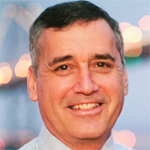The register has provided a fertile seedbed for a large number of research efforts, including outcomes research in osteoporosis and cardiovascular sequelae; establishment of cohorts of ankylosing spondylitis patients; and, in 2002, establishment of a new cohort of early RA, which has been followed with a special focus on MRI findings.

Most recently, his group contributed data from their early arthritis patient cohort to the EULAR/ACR Task Force that just released its new criteria for diagnosis of RA. Maria D. Mjaavatten, MD, a PhD candidate who is working on prediction of persistent arthritis and RA in very early arthritis patients, notes: “We are now talking about this ‘window of opportunity’ to try and catch people at risk of developing RA earlier.” Such work would not have been possible without access to the exhaustive work spent tracking patients over time. This Norwegian very early arthritis clinic (NOR-VEAC) study has included more than 1,000 patients with arthritis of less than 16 weeks’ duration—quite a shift, notes Dr. Kvien, “from the early 90s, when we defined ‘early’ RA in EURIDISS as up to four years’ duration.”
Intentional Leadership
When he became head of rheumatology at Diakonhjemmet in 1994, Dr. Kvien noted that the department’s small size and containment within a smaller hospital translated to an advantage: The department could grow without having to strive too much against competing departments, which is often the case at bigger hospitals.
Known for his modesty, Dr. Kvien states, “I have been fortunate to be the right person at the right time and have been given some opportunities.” Colleagues and trainees attribute the growth of their department to Dr. Kvien’s astute leadership. Espen Haavardsholm, MD, PhD, a senior researcher in the department, says of his former mentor (and now colleague): “He is very visionary. He wants the department to do high-quality research, and he has some well-thought-out strategies on how to develop the organization.” One of those strategies appears to be recruiting researchers while they are still in medical school. According to current and former trainees, Dr. Kvien’s practice was to offer them positions as research assistants when he met them during their medical training. “There has been a big development in our group in the last 10 years, ” notes Dr. Haavardsholm. “Several of the students have received their PhDs, and we now have quite a few at the postdoctoral level as well.”
Dr. Kvien is very passionate that we should not sit in our own department and hold onto our own data—we should seek opportunities to collaborate with other groups, especially research groups that are at a higher international level.
Glenn Haugeberg, MD, PhD, who did his original PhD work in Dr. Kvien’s lab in 1995 on generalized osteoporosis in RA, is now a professor of rheumatology at the Norwegian University of Science and Technology in Trondheim, Norway. Of Dr. Kvien’s training program, he says, “Tore has been very strategic and very clever at building up this research department. This has only been possible because of both his brilliant human skills and his dedication to research.”
Egalitarian Collaboration
Pernille Bøyesen, MD, a current PhD candidate who has known Dr. Kvien since she was a medical student, agrees that the department is outstanding. “In addition to his scientific qualities, Dr. Kvien also has a high social intelligence,” she notes. “He is really good at lifting people up and encouraging them to do things that sometimes they didn’t think were possible for them. “We don’t have a hierarchical system here [in the department]. Whether you’re a student just taking courses, or a doctor, nurse, or physiotherapist, we are all on the same level. I think it’s important for Dr. Kvien that we all talk together in the same language. We are used to being open minded and to saying what we think.”

